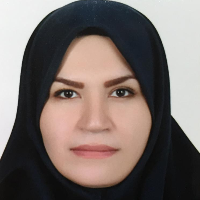Qualitative, technical and financial investigation of the use of different sieves on useful and useless losses of irrigated and dry wheat cultivars in some moderate climate provinces of the country
Determining the exact rate of wheat loss in wheat purchase centers is one of the concerns of the government to ensure farmers' fair purchase of wheat. In this research, the performance of four types of separator sieves with 2×2, 2×20, 1.7×20 and 1.5×20 mm grids was studied for separation of impurities in irrigated and rain-fed wheat cultivars in Kermanshah, Fars and Semnan provinces in moderate regions in terms of qualitative, technical and financial. The results showed that in the case of wheat sieving with a 2x20 mm sieve, the highest amount of protein and zaleny sedimentation volume was observed, although these changes in bakery properties, including grain hardness, were not significant. In addition, samples sieved with 1.5 x 20 mm sieve had the lowest Falling number. the average useless loss for irrigated and rainfed wheat varieties was 1.55% and 1.61% and the average useful loss for wheat varieties was with mesh 2×20, 1.7 × 20, 2 × 2 and 1.5 × 20 mm was 4.7%, 1.85%, 0.6% and 0.084%. By changing the separation sieve from 2×2 mm mesh sieve to 2×20 و and 1.7×20 mm mesh sieves, the useful loss rate increased and the financial value of wheat purchased in the purchase centers are coming down. Also, in the preliminary separation of impurities (weed seeds), 2×2 mm mesh sieve was more efficient than other sieves. Thus, the use of 2×2 mm mesh sieve to determine the useful loss of wheat in purchase centers can be useful and beneficial to farmers
-
Gluten free sourdough production by using millet, quinoa and amaranth flours and Lactobacillus fermentum and Lactobacillus plantarum starters
Roya Nouri, Alireza Faraji*,
Food Science and Technology, -
Investigating the grain yield stability of durum wheat promising lines using the combination of AMMI and BLUP methods
Tohid Najafi Mirak, Manouchehr Dastfal, Manouchehr Sayyahfar, Hosein Farzady, Shahryar Sasani, Hassan Zali *,
Journal of Agricultural Science and Sustainable Production, -
Economic productivity of water and profitability of fodder production of cowpea, mung bean and guar under normal irrigation and drought stress conditions
*, Vida Ghotbi, Ali Mostafa Tehrani, Ali Mahrokh, Ali Akbar Ghanbari
Water Engineering, -
Investigating the Effect of Different Combination Strategies of Hot Air and Infrared Radiation on Apricot Drying
Mansoureh Mozaffari *, Hossein Ghaffari Setoubadi, , Jaber Soleimani
Agricultural Research, Education and Extension Organization, -
Financial evaluation of wheat seed processing lines in domestic systems and the value of seed losses
*, , Abdoulrasool Shirvanian, Ahmad Mohaddes Hosseini, Abyar Noor Mohammad, Aidin Hamidi, MohammadHossein Saeidirad, Jafar Habibi Asl, Mohamadhossien Razzaghi, MohammadAli Behaein, Maryam Mahmoodi, Afshin, Eyvani, Elyas Dehghan
Iran Agricultural Research, Winter and Spring 2022 -
Economical Evaluation of Sahara Lettuce cultivar production of different planting systems
*, Seyyed Hassan Mousavi, Ali Akbar Ghanbari, Rasool Solgi
Journal of Research in Horticultural Sciences,





